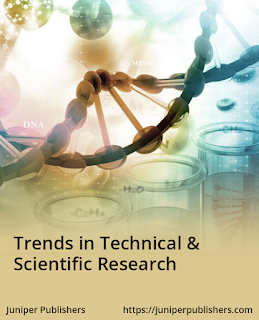Maternal Hyperthyroidism - Milk Ejections: What is the Association? - Juniper Publishers
Trends in Technical & Scientific Research - Juniper Publishers
Commentary
The regular balance in the activity of the maternal Hypothalamic-Pituitary-Thyroid Axis (HPTA) is vital for the normal progress of fetuses and neonates [1-50], especially the concentration of the Prolactin (PRL) [51-68]. In addition, the placental hormones, ovarian steroids, and neurotransmitter systems including the opioid, adrenergic, dopaminergic, serotonergic can regulate the release of PRL during the gestation and lactation [69-75]. More interestingly, in the transition from the late gestation to lactation, the expression of tyrosine hydroxylase mRNA was diminished gradually to maintain the hyperprolactinemia during the lactation and suckling process [76-85].
On the other hand, the previous observations have shown the link between the hyperthyroidism and delaying the milk ejections and suckling process [86-90]. Administration of 1 or 0.25mg/kg/day Thyroxine (T4) to rats caused the following [91-93]:
a. Disrupted the ovulation process;
b. Displayed premature luteolysis and preterm birth
c. Defective parturition;
d. Lactation failure;
e. Progress the preterm Prolactin (PRL) surge.
In addition, Administration of 0.1mg/kg/day T4 to rats caused the following [94]:
a. Maintained the lactation process;
b. Incomplete blockage of the suckling;
c. Released the PRL and oxytocin;
d. Premature mammary gland involution; and
e. Diminished the litters growth rate.
In general, the disruption in milk ejections due to hyperthyroidism can be explained as the following [95]:
a. Alteration the expression of Estrogen a (ERa), hypothalamic PRL receptor (PRLR), progesterone (PR), and signal transducer activator of transcription 5 (STAT5);
b. Elevation the expression and activation of the tyrosine hydroxylase;
c. Elevation the lactatingdopaminergic tone; and
d. Blunting/delaying the suckling mechanism and the rate of litter growth.
According the above data, I hypothesized that the maternal THsplay dynamic roles in the lactation and suckling process. The maternal thyroid dysfunctions (hyperthyroidism) may impair the lactation and milk ejections. The maternal hyperthyroidism may delay the fetal/neonatal development. Thus, regulation the concentrations of the maternal thyroid hormones (triiodothyronine (T3) and T4), Thyroid-Stimulating Hormone (TSH), PRL and Growth Hormone (GH) can simply avoid this disruption during the gestation and lactation. This interpretation will support to prevent not only the gestational hyperthyroidism but also the lactation disorders. Additional studies are necessary to recognize the molecular mechanisms whereby the maternal hyperthyroidism impairs the lactation and suckling process, and affects the secretion of PRL, the signaling pathways of PRL, and expression of tyrosine hydroxylase and PRLR.
For more Open Access Journals in Juniper Publishers please click on: https://juniperpublishers.com/index.php
For more articles in Trends in Technical & Scientific Research please click on: https://juniperpublishers.com/ttsr/index.php


Comments
Post a Comment